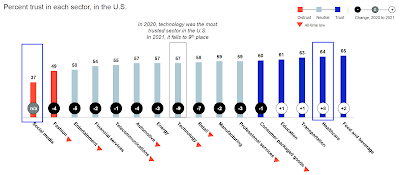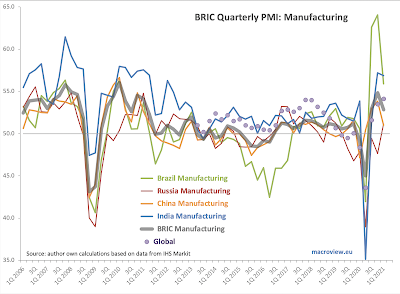Some shocking, genuinely shocking data from the Edelman Global Trust Barometer for 2021. Let's take a look.
Start with this:
Welcome to the world where sociopaths like Jeff Bezos are both trusted to be competent and perceived to be ethical.
Meanwhile, at least w are catching up with what is happening in the tech sector:
And with the Social Media...
But we can't be human without some serious cognitive dissonance... Healthcare is now the second most trusted sector of business in America. Yep, the same private healthcare that had to rely on public / State / Federal money and logistics to distribute vaccines. The same private healthcare that could not organize vaccinations. The same private healthcare that, effectively, bankrupted and overcharged millions of Americans for emergency treatments during the pandemic.
Back to Social Media:
I am not quite sure what people 'trust' in terms of information delivered via 'search engines', exactly. A search engine provides access to information, but it does not provide or produce information. So drop this daft category from the analysis and what you have? Traditional Media is barely above the water, when it comes to trust. Owned Media and Social Media are below the waterline. If you control for the partisanship divide in the U.S. political landscape, most likely the vast majority of those trusting Traditional Media are... well, Democrats. The vast majority of those who distrust Social Media are... well, Democrats. Converse holds for the Republicans. One way or the other, massive shares of American population do not have trust in anything relating to quality control or verifiability of information sources.
This year's barometer is a scary reading. In most basic terms, NGOs and Business are the only two sets of institutions that are perceived ethical. Business' perception in this area is dangerously close to being marginal. Perceived incompetency of the Government is vastly greater than perceived competency of Business. Media is virtually the exact mirror reflection of business. We trust no one in terms of information we receive. And we love those who are making money by not caring for us - American Healthcare. We lap up anything our employers communicate, but we believe they are telling us bullshit when it comes to their social and environmental sustainability efforts or to the risks of us being displaced by them with AI and technology.
Is there much 'social fabric' left that hasn't been torn up, yet?..
























